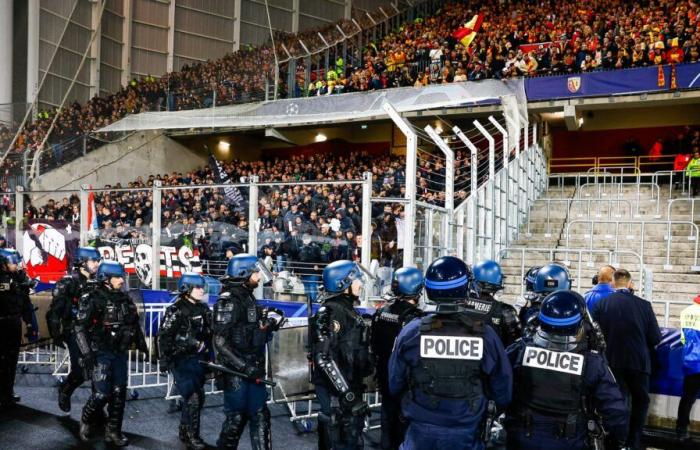A few weeks ago, the new Minister of the Interior, Bruno Retailleau, presented on RMC a plan to fight against violence in football stands in France. The first cop in France had painted a very dark portrait of the current state of the stands. But for this 2024-2025 financial year, is the situation really so catastrophic?
In journalistic jargon, we can call it a chestnut when talking about violence in French football. Ligue 1 and Ligue 2 have resumed for several months, and like every year, this highly sensitive subject comes back to the forefront, often at the same time of year. The arrival of a new government at the end of September also pushed this theme to the front page of the news.
The violent events on the sidelines of the Montpellier-Marseille meeting represent the starting point of this media surge. The new Minister of the Interior quickly took up this issue, before announcing measures a few days later on RMC. To this mix, we must add the homophobic chants in several stands of the championship and the 'Free Palestine' banner at the Parc des Princes, you get a perfect cocktail to surf on the state of the French stands for several weeks. It is especially Ligue 2 which has experienced turbulence with a turbulent start to the season, particularly on the subject of the championship programming, in particular on the Lorient side.
Travel ban orders explode
And yet, compared to recent seasons, this start of the year is taking place rather calmly. This trend is even confirmed by several police sources. It must be said that orders governing supervision and travel bans on opposing supporters have exploded in recent months. This greatly limits possible incidents. Since the start of the season, more than sixty travel regulations have been published by French prefectures and around twenty travel ban orders have been signed by the Minister of the Interior. These two data could break records at the end of the season.
The few measures announced by the Ministry of the Interior did not shake up the French stands. For several weeks, a gap has been widening between the supporters and the authorities. With the former Minister of Sports, discussions were regular and much easier between the different stakeholders. Today, they are non-existent. However, Amélie Oudéa-Castéra did not hesitate to launch a moratorium last season after the stabbing death of an FC Nantes supporter just before a match against Nice. But discussion was possible, particularly during the plenaries of the National Supporterism Body.
“A sharp drop in arrests”
In its 2023-2024 mid-season report, the DNLH noted an “overall increase in stadium bans”, particularly in terms of administrative stadium bans which increased from 63 in 2022-2023 to 148 in 2023-2024. At the same time, the DNLH noted “a sharp drop in arrests” in Ligue 1 and the European Cup. Going from 246 arrests in Ligue 1 in 2022-2023 to 131 in 2023-2024. On the other hand, on the same date, the use of internal security forces is still very significant in recent seasons, which irritates the Minister of the Interior. But for the moment, few solutions exist to reduce the number of police and gendarmes mobilized around football matches in France. At the same time, the number of orders banning the movement of opposing supporters exploded. Which demonstrates that even without opposing supporters in a football match, the number of police and gendarmes mobilized remains approximately the same. The DNLH nevertheless explained that there was a “worsening of the nature of the violent acts committed despite a drop in the facts observed”.
In the coming weeks, several sensitive meetings are scheduled in France, including a Brest-PSV Eindhoven match in Guingamp. Orders prohibiting the movement of supporters should rain down.






